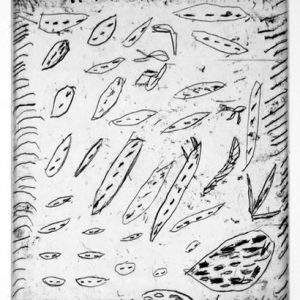Description
The Islanders’ knowledge of the habits of the many forms of marine life in the Strait’s waters and their highly developed skills of hunting and fishing have always assured them of a ready supply of seafood. Their knowledge of the islands and reefs, weather, tides, currents and celestial navigation was superb.
Green Turtles were hunted throughout the Strait; and females were preferred. Sometimes they were caught on the beaches, after they had finished laying their eggs in the sand. Generally however, they were caught from canoes. The hunters used either harpoons [mainly in the Western and Central Islands] or single-pronged spears [in the Eastern Islands]. The best time for hunting turtle was towards the end of the year during the mating season, when the turtles were often found floating lazily near the surface of the water, above the reefs; a time when the star constellation of Tagai appears, a celestial figure who marks a major social and seasonal change for the Torres Strait Islander people. If the hunters were able to get close enough to the turtle, one hunter would jump overboard and grasping the neck and tail end of the animal, would turn it over on its back. Others would then help haul it aboard with ropes. If the turtle was harpooned or speared, the men in the canoe would follow the rope, which was attached to the weapon, and when close enough, would jump into the water to retrieve the animal.
Traditional methods of hunting and fishing have changed little from early times to the present day, although nowadays dinghies and motorboats are used in place of canoes, and modern fishing equipment has replaced the bamboo spears and turtle-shell fish hooks.




